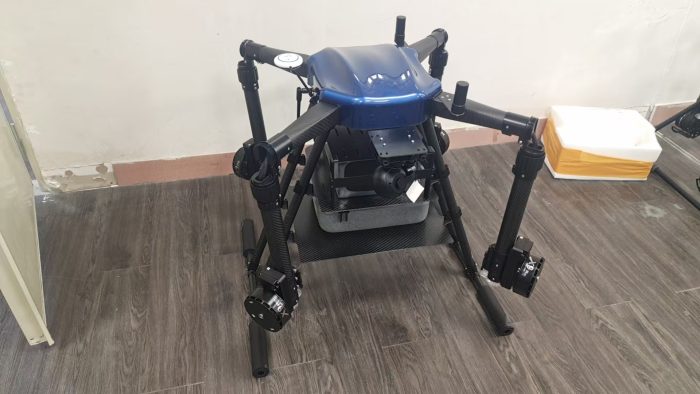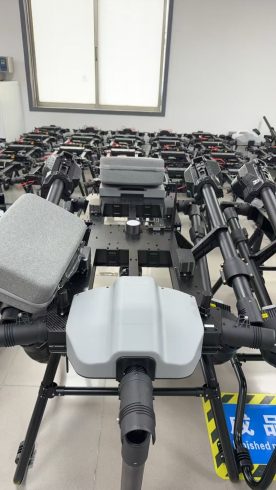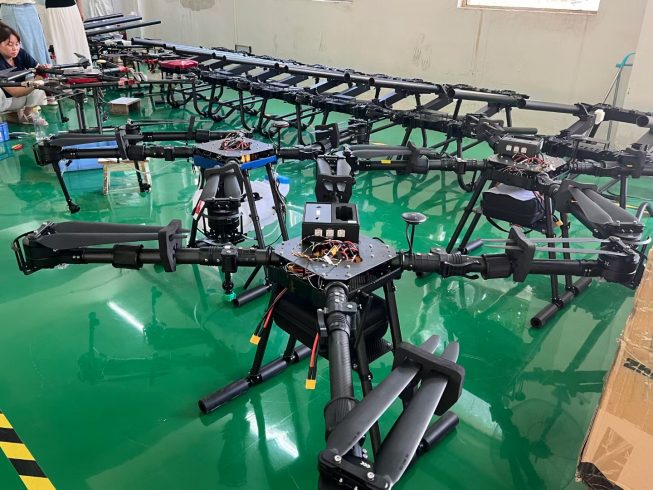The world’s farms feed billions, but they’re also on the front lines of some of humanity’s biggest challenges: a shrinking workforce, dwindling natural resources, and the urgent need to cut carbon emissions. For decades, farmers have battled these issues with grit and tradition—but now, a new ally is taking flight: agricultural drones, built not in isolation, but with the grit to solve real-world problems. Here’s how our factory is turning engineering into impact, one field at a time.
The Pain Points: What Keeps Farmers Up at Night
Ask any farmer, and they’ll list the same struggles:
-
Labor Shortages: In the U.S., 75% of farms report difficulty hiring workers, leaving crops unpicked or fields unscouted.
-
Resource Waste: Globally, 60% of applied fertilizer and 40% of pesticides never reach target crops—wasted money and polluting waterways.
-
Climate Uncertainty: Erratic weather patterns mean farmers gamble yearly on planting times, irrigation, and pest control.
These aren’t small issues. They threaten food security, farmer livelihoods, and the planet. Enter agricultural drones—tools designed not just to fly, but to solve.
Engineering for Impact: Our Drones as Problem-Solvers
At our factory, we don’t build drones for specs sheets. We build them to tackle specific pain points. Here’s how:
1. Closing the Labor Gap with Autonomous Scouting
In California’s Central Valley, Maria, a vineyard manager, used to spend 10 hours a week walking rows to check for powdery mildew. Now, her fleet of our drones does the work in 90 minutes. Equipped with AI-powered visual sensors, the drones identify early signs of disease with 98% accuracy—far faster than human eyes. “I can focus on fixing problems, not hunting for them,” she says. For large-scale farms, this translates to 30% less labor costs and 25% higher yields by catching issues early.
2. Slashing Waste with Precision Application
Water scarcity plagues India’s Punjab region, where rice farmers once flooded fields with 3,000 liters of water per kilogram of grain. Our drones changed that. Using soil moisture sensors and variable-rate spraying, they deliver water and fertilizer only where needed—cutting water use by 50% and nitrogen runoff by 75%. Farmer Rajesh now grows 20% more rice with half the resources. “It’s like teaching the field to ask for what it needs,” he grins.
3. Weathering Climate Chaos with Data Resilience
In Brazil’s soybean belt, climate change has made planting windows unpredictable. Our drones now integrate with weather APIs to map soil readiness—analyzing moisture, temperature, and organic matter—to recommend optimal planting dates. For cooperative farmer Lúcia, this meant avoiding a late frost last year that ruined 15% of her neighbor’s crop. “The drone didn’t just spray—it predicted,” she says.
Built to Last: Quality That Honors the Land
Innovation means nothing if it doesn’t endure. Our drones are forged in a factory where durability meets ethics:
-
Rugged by Design: Frames made from aircraft-grade aluminum resist rust and impacts from branches or rough landings.
-
Low-Carbon Manufacturing: 80% of components are sourced locally to reduce transport emissions, and we use recycled plastics in non-critical parts.
-
Farmer-Owned Repairs: We sell modular kits so farmers can swap batteries, propellers, or sensors themselves—no need to ship drones halfway across the country.
The Ripple Effect: More Than Drones, a Movement
Our work ripples far beyond individual farms. In Ghana, a women’s farming collective using our drones now earns 40% more by selling surplus crops. In Australia, a cattle station cut methane emissions by 20% using drones to identify and treat methane-hotspot pastures. Globally, our drones have reduced chemical use by over 2 million liters since 2020—enough to fill 800 Olympic pools.
But the true measure of success? Farmers telling us, “This isn’t just a tool. It’s a partner.”
Growing Forward: What’s Next
We’re not stopping here. Our R&D lab is testing drones with:
-
Swarm Intelligence: Teams of drones working together to map fields in hours, not days.
-
Carbon Capture Sensors: New tech to measure how much CO₂ crops absorb, turning farms into climate allies.
-
Training Hubs: Partnerships with rural schools to teach drone operation—ensuring the next generation grows up fluent in ag-tech.
Farming has always been about resilience. So is our work. By building drones that solve the hardest problems, we’re not just advancing technology—we’re honoring the farmers who feed us, protecting the land they steward, and growing a future where agriculture thrives, sustainably.
Because the best innovations don’t just fly—they lift everyone they touch.
THE END










暂无评论内容